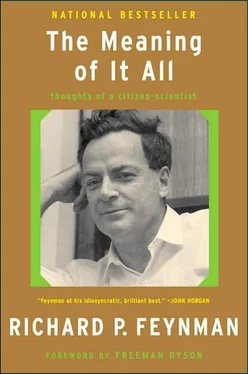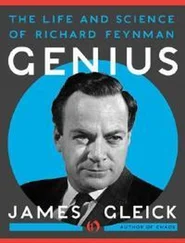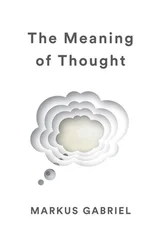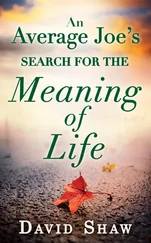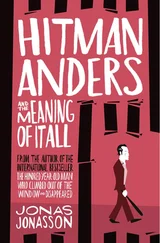As I say, I know a lot of people. Ordinary people. And I think their intelligence is being insulted. I mean there’s all kinds of things. You turn on the radio; if you have any soul, you go crazy. People have a way—I haven’t learned it yet—of not listening to it. I don’t know how to do it. So in order to prepare this talk I turned on the radio for three minutes when I was at home, and I heard two things.
First, I turned it on and I heard Indian music—Indians from New Mexico, Navajos. I recognized it. I had heard them in Gallup, and I was delighted. I won’t give an imitation of the war chant, although I would like to. I’m tempted. It’s very interesting, and it’s deep in their religion, and it’s something that they respect. So I would report honestly that I was pleased to see that on the radio there was something interesting. That was cultural. So we have to be honest. If we’re going to report, you listen for three minutes, that’s what you hear. So I kept listening. I have to report that I cheated a little bit. I kept listening because I liked it; it was good. It stopped. And a man said, “We are on the warpath against automobile accidents.” And then he went on and said how you have to be careful in automobile accidents. That’s not an insult to intelligence; it’s an insult to the Navajo Indians, and to their religion and their ideas. And so I listened until I heard that there is a drink of some kind, I think it’s called Pepsi-Cola, for people who think young. So I said, all right, that’s enough. I’ll think about that a while. First of all, the whole idea is crazy. What is a person who thinks young? I suppose it is a person who likes to do things that young people like to do. Alright, let them think that. Then this is a drink for such people. I suppose that the people in the research department of the drink company decided how much lime to put in as follows: “Well, we used to have a drink that was just an ordinary drink, but we have to rearrange it, not for ordinary people but for special people who think young. More sugar.” The whole idea that a drink is especially for people who think young is an absolute absurdity.
So as a result of this, we get perpetually insulted, our intelligence always insulted. I have an idea of how to beat it. People have all kinds of plans, you know, and the ETC. is trying to straighten it out. I’ve got an easy plan. Suppose that you purchased the use for thirty days of twenty-six billboards in Greater Seattle, eighteen of them lighted. And you put onto the billboards a sign which says, “Has your intelligence been insulted? Don’t buy the product.” And then you buy a few spots on the television or the radio. In the middle of some program a man comes up and says, “Pardon me, I’m sorry to interrupt you, but if you find that any of the advertising that you hear insults your intelligence or in any way disturbs you, we would advise you not to buy the product,” and things will be straightened out as quickly as it can be. Thank you.
Now if anybody has any money that they want to throw around, I’d advise that as an experiment to find out about the intelligence of the average television looker. It’s an interesting question. It’s a quick shortcut to find out about their intelligence. But maybe it’s a little bit expensive.
You say, “Its not very important. The advertisers have to sell their wares,” and so on and so on. On the other hand, the whole idea that the average person is unintelligent is a very dangerous idea. Even if it’s true, it shouldn’t be dealt with the way it’s dealt with.
Newspaper reporters and commentators—there is a large number of them who assume that the public is stupider than they are, that the public cannot understand things that they [the reporters and the commentators] cannot understand. Now that is ridiculous. I’m not trying to say they’re dumber than the average man, but they’re dumber in some way than somebody else. If I ever have to explain something scientific to a reporter, and he says what is the idea? Well, I explain it in words of one syllable, as I would explain it to my neighbor. He doesn’t understand it, which is possible, because he’s brought up differently—he doesn’t fix washing machines, he doesn’t know what a motor is, or something. In other words, he has no technical experience. There are lots of engineers in the world. There are lots of mechanically minded people. There are lots of people who are smarter than the reporter, say, in science, for example. It is, therefore, his duty to report the thing, whether he understands it or not, accurately and in the way it’s been given. The same goes in economics and other situations. The reporters appreciate the fact that they don’t understand the complicated business about international trade, but they report, more or less, what somebody says, pretty closely. But when it comes to science, for some reason or another, they will pat me on the head and explain to dopey me that the dopey people aren’t going to understand it because he, dope, can’t understand it. But I know that some people can understand it. Not everybody who reads the newspaper has to understand every article in the newspaper. Some people aren’t interested in science. Some are. At least they could find out what it’s all about instead of discovering that an atomic bullet was used that came out of a machine that weighed seven tons. I can’t read the articles in the paper. I don’t know what they mean. I don’t know what kind of a machine it was just because it weighed seven tons. And there are now sixty-two kinds of particles, and I would like to know what atomic bullet he is referring to.
This whole business of statistical sampling and the determining of the properties of people by this manner is a very serious business altogether. It’s coming into its own, but it’s used very often, and we have to be very, very careful with it. It’s used for choice of personnel—by giving examinations to people—marriage counseling, and things of this kind. It’s used to determine whether people get into college, in a way that I am not in favor of, but I will leave my arguments on this. I will address them to the people who decide who gets into Caltech. And after I have had my arguments, I will come back and tell you something about it. But this has one serious feature, among others, aside from the difficulties of sampling. There is a tendency, then, to use only what can be measured as a criterion. That is, the spirit of the man, the way he feels toward things, may be difficult to measure. There is some tendency to have interviews and to try to correct this. So much the better. But it’s easier to have more examinations and not have to waste the time with the interviews, and the result is that only those things which can be measured, actually which they think they can measure, are what count, and a lot of good things are left out, a lot of good guys are missed. So it’s a dangerous business and has to be very carefully checked. The things like marriage questions, “How are you getting along with your husband,” and so on, that appear in magazines are all nonsense. They go something like this: “This has been tested on a thousand couples.” And then you can tell how they answered and how you answered and tell if you are happily married. What you do is the following. You make up a bunch of questions, like “Do you give him breakfast in bed?” and so on and so on. And then you give this questionnaire to a thousand people. And you have an independent way of telling whether they are happily married, like asking them, or something. But never mind. It doesn’t make any difference what it is, even if the test is perfect. That’s not the part where the trouble is. Then you do the following. You see about all the ones who are happy—how did they answer about the breakfast in bed, how did they answer about this, how did they answer about that? You see it’s exactly the same as my rat race, with right and left. They have decided on the odds of the thing in terms of the one sample. What they ought to do to be honest is to take the same test that has now been designed, in which they know how to make the score. They’ve decided this gets five points, that gets ten points, in such a way that the thousand that they tried it on get marvelous scores if they are happy and lousy scores if they’re not. But now is the test of the test. They cannot use the sample which determined the scoring for them. That’s going backwards. They must take the test to another thousand people, independently, and run it out to see whether the happy ones are the ones that score high, or not. They do not do that, because it’s too much trouble, A, and the few times that they tried it, B, it showed that the test was no good.
Читать дальше
